By Scott Huntington
You’d probably be lying if you said that you didn’t spend at least a moderate amount of time during your childhood banging on various and sundry items that happened to be within reach. If we’re being honest, this particular sort of self-expression doesn’t seem to lessen with age; thankfully, our methods tend to get more sophisticated over time.
However, sometimes it’s fitting to go back to the primal days of beating anything that will make noise. Making your own percussion instruments can be a great way fully to understand sound, timbre, and tone. If you have music students or teach a drumline, having your students build their own drums can be a fantastic learning experience for everyone involved.
Before we get into the specifics about how to perfect your own DIY percussion instruments, let’s get some inspiration from some of the big names in homemade instruments.
Learn from the professionals
Most of us have some experience appropriating household items in our music-making endeavors, but the people behind the show STOMP have turned this pastime into an art form. This unique live show has a 20th anniversary quickly approaching, with tickets for the celebration show in New York City selling fast.
Using everything from trash-can lids to their own bodies, this is as good as it gets when it comes to DIY instruments.
If you’re looking for another great source of inspiration, look no further than Recycled Percussion – a “quintessentially Vegas” experience that boasts of having performed more than 4,000 shows worldwide. Quite a few of the band’s instruments will look quite familiar; they’re no strangers to homemade instruments made from pots, pans, scrap metal and even automobile parts.
Use What’s Around You
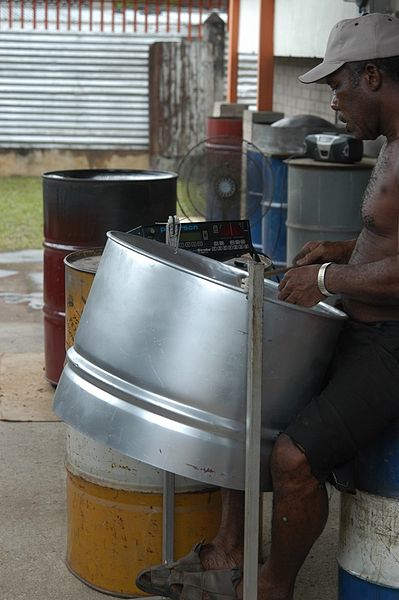
Tuning a steel drum with a Peterson strobe electronic tuner. Photo by Andrew Hitchcock. CC BY 2.0 via Wikimedia Commons.
Steel drums, or pans, has its roots in Western Africa, and its sound remains intrinsically linked with the spirit of the Caribbean. It really is a singular sound, and even the most basic steel pans – those made of recycled 55-gallon drums – are capable of producing utterly captivating sounds.
Building and tuning your own steelpan is time-intensive, but certainly not impossible, as this video from SmartyPansMusic demonstrates. Even if you don’t have the time or any spare oil drums lying around, there’s a good chance that you can find some suitable materials not far from where you live. Here are some ideas.
PVC Pipes: Whoever it was that first looked at a PVC pipe and said “I can make music with that” was clearly a visionary. PVC pipes are fairly inexpensive, as far as building materials go, and can produce an almost shocking range of sounds.
To get a sense of what’s possible with PVC pipes, check out this wonderful video from a guy who played some recognizable tunes including “In the Hall of the Mountain King” and “Viva la Vida.” The interesting thing about this type of instrument is that the sounds it produces is less about the sound of two objects colliding and more about the manipulation of the air within the pipes. The major variables you’ll be playing with are the lengths and widths of the pipes.
Scrap Metal: If you want to create your own STOMP experience at home, it may be time to “rescue” some scrap metal to create your own percussion instruments. Companies like McElroy Metal have sites in many states throughout the U.S., and offer a variety of materials to choose from, in different sizes and shapes.
Slum Drummers is a group of Kenyan-born musicians who have brilliantly combined scrap-metal instruments with public outreach; their mission is to spread not only a love of music, but also an awareness of cultural issues such as drug use. From humble beginnings in scrap yards, these musicians and their castaway pieces of metal have gone on to inspire audiences across the world.
Buckets: It really is amazing what can be accomplished with some ordinary household items. If you’re working with a somewhat tighter budget, or a trip to a scrap yard simply isn’t in the cards for you, buckets might just be the way to go.
You can experiment with different materials, such as plastic and metal, as well as with different thicknesses. Buckets are some of the simplest and most utilitarian household items at our disposal, but they can produce a wide array of sounds. You’ll also want to try different methods of striking the buckets; traditional drumsticks are great, but you could try differently sized pieces of wood or even metal to really get the perfect tone.
Don’t Be Afraid to Experiment
No matter what materials you end up choosing, some experimentation will be in order before you get the sound you’re looking for. Modern drum kits work the way they do because of resonant heads and strategically placed air holes. Some trial and error is necessary to see what works best for the materials you’ve chosen.
Experimenting with different types of materials can be a really instructive experience for music students. It’s one thing to have a measure of skill as a musician, but quite another to understand precisely how it is that our favorite instruments create their sound. To that end, homemade drums are a great place to start.
Scott Huntington is a percussionist specializing in marimba. He’s also a writer, reporter and blogger. He lives in Pennsylvania with his wife and son and does Internet marketing for WebpageFX in Harrisburg. Scott strives to play music whenever and wherever possible. Follow him on Twitter at @SMHuntington.
Oxford Music Online is the gateway offering users the ability to access and cross-search multiple music reference resources in one location. With Grove Music Online as its cornerstone, Oxford Music Online also contains The Oxford Companion to Music, The Oxford Dictionary of Music, and The Encyclopedia of Popular Music.
Subscribe to the OUPblog via email or RSS.
Subscribe to only music articles on the OUPblog via email or RSS.
The post Make your own percussion instruments appeared first on OUPblog.

Read It. Move It. Share It. Today's post is part of my ongoing collaboration with dance educator Maria Hanley from Maria's Movers. Each month I recommend a book for Maria to use in her creative movement classes, and then we both share out experiences with the book. This month we're exploring Stomp, Dinosaur, Stomp! by Margaret Mayo and Alex Ayliffe.Look at the Tyrannosaurus on that cover! A little scary, don't you think? But don't worry...once you open the book, he's not that scary anymore. In fact, he's pretty harmless, even in the presence of other dinosaurs. Mostly, this Tyrannosaurus just wants to stomp!
Mighty Tyrranosaurus
loved stomp, stomp, stomping,
gigantic legs striding, enormous jaws opening,
jagged teeth waiting for guzzle, guzzling!
So stomp, Tyrannosaurus stomp!
As the book continues, we meet an immense Diplodocus, a crested Pteranodon, a fierce Velociraptor, and seven other prehistoric creatures. Like the Tyrranosaurus, each of the creatures has a signature move -- the Diplodocus a swish, the Pteranodon a glide, the Velociraptor a hunt -- plus additional moves that would hopefully inspire young children to come up with some moves of their own.
Although the Tyrranosaurus is mostly absent when we meet these other creatures, he does appear on the page devoted to a tough Ankylosaurus. The signature move of the Ankylosaurus is a whack, and poor Tyrannosaurus is the recipient of one of those whacks! He doesn't look like he minds, though, and this action adds a splash of humor to the already upbeat book. We then see the Tyrannosaurus one more time -- at the end of the book -- when, still stomping, he leads the whole pack of creatures in a dinosaur parade.
Girls and boys -- especially those who love to move -- will appreciate the many movement words in the text. I bet they'll also enjoy the bright illustrations, which take up every corner of every page and, in doing so, exaggerate the exuberance that the text already portrays. Let's see if Maria agrees! You can check out her post
here.
 Stomp! by Ruth Paul (Scholastic)
Stomp! by Ruth Paul (Scholastic)
STOMP through the swamp
Over the hump JUMP
In the jungle ROAR
Swish your tail and THUMP
So go the dinosaurs on their stomp through the swamp. They squish-squash berries, hop over rocks, until they stop and cause a dinosaur jam. Then they turn around and swing through the swamp the other way until something happens to their leader...
Ruth Paul's artwork is gorgeous - totally appealing to the four and under target audience. I can see kindergarten's having a lot of fun with this book. The kids will take turns being the leader as they stomp around the kindergarten doing all the fun things dinosaurs do. On further readings children will notice the onomatopoeia words in smaller print; and perhaps will come up with some of their own.
Scholastic has published the book on glossed card, which will ensure little hands won't bend the pages in their excitement to read the book. The book's A3 size enables groups of 40 children to see the illustrations and print easily too. Ruth Paul has created the illustrations in pencil and then coloured it in Photoshop on the computer. She co-designed the book with Vida Kelly.
Ruth's other books include: The Animal Undie Ball, Superpotamus, Two Little Pirates and The King's Bubbles.
A must have for Under fours and all kindergartens!
Tarantula Boo! by Lucy Davey, Illustrated by Philip Webb (Scholastic)
 Safe behind glass at Zurlington Zoo,
Safe behind glass at Zurlington Zoo,
lived loveable larrikin Lenny Lassoo.
Lenny was furry and fuzzy and hairy,
and liked to play tricks that were frightfully SCARY.
Lenny Lassoo loves to play tricks at the zoo - his favourite game is Tarantula Boo! He waits until school children press their noses against the glass then out he jumps from hiding to scare the wits out of them - all in fun, of course. But though he is a trickster he really is a lonely Lenny Lassoo. He dreams of a friend to share his home and fun. He gets the chance to look for one when the glass on his cage is cracked and he escapes. Does he find a friend at the zoo or does he get a surprise himself?
Another great book for Under Fives (and will also be appreciated in the Junior School at Primary too). There's rhyme, alliteration and use of onoomatopoeia to keep the children interested in the language. Along with changing font sizes and Philip Webb's playful illustrations that are bright and fill the A3 sized page. A wonderful read-aloud for the kindergarten and Junior School.
Watch the

Richard Van Camp's Welcome Song for Baby: A Lullaby for Newborns will be given to every newborn baby born in British Columbia in 2008. Irked Magazine has a couple of images from inside the book. Click on the link, scroll down, and click on the pics of the babies. They'll pop up much larger than you see here. According to the article in Irked, the book gift program is the "Books for BC Babies" initiative. Over 42,000 babies will be born in BC during 2008; over 42,000 families will have this gem in their home.
That is awesome! Congratulations, Richard!
Any library in the world that serves children ought to get several copies of this book. And readers who know of newborns or about-to-be-newborns, ought to give this book to the family. At present, it is (as far as I know) only available from Oyate.
.

both by Susan Goldman Rubin
Chronicle 2007
Board books are funny things. On the one hand they make perfect sense if you are trying to get kids used to the idea of books and reading at a very early age. They have sturdy coated cardboard pages that withstand throwing, food spills and the gnawing and chewing that comes from young pups.
But board books didn't always exist. They were invented, much like the term teenager was invented to suggest a difference between child and adult, probably more like the way the tween demographic was identified by markers and advertisers in order to better capture income from a growing consumer demographic. Somewhere in between the social science of presenting kids books at the earliest possible age and the capitalist goal to build a loyalty and brand recognition from the cradle, that is soupy mire from which board books arise.
Board books are not evil but there is a whole lot of cute mixed in with the good. It saddens me, for example, that publishers make board book versions of classic picture books, often abridging texts or images to fit the format. And there are those books that have "cute" spred all over their intents, proving that their true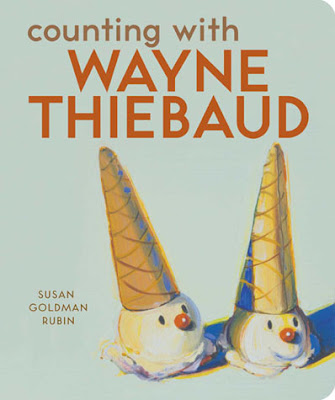 market is parents and grandparents for whom the book is going to have a greater appeal; they aren't buying for the child so much as they're hoping to impress their opinion of what is cute onto soft minds.
market is parents and grandparents for whom the book is going to have a greater appeal; they aren't buying for the child so much as they're hoping to impress their opinion of what is cute onto soft minds.
But sometimes people get that a board book can be more, and here we have two examples. Author Goldman presents classic Andy Warhol illustrations from the 1950's and 60's with short bits of rhyming text that are linked to their predominant colors. For those who only know Warhol's iconic factory-produced screenprints these fresh ink and watercolor illustrations may prove that, when he wanted to be, Andy was a talented artist. Featuring a typical assortment of animals -- cat, butterfly, lion, monkey, &c. -- Rubin fuses the color concept board book with a mini primer on a modern art master.
In the Thiebaud book Rubin offers us some of the artist's food paintings with a counting rhyme. That Thiebaud's paintings are done in a very thick application that makes them look as if they'd been composed with cake frosting is an added benefit. Consisting mostly of deserts -- pie, ice cream cones, cupcakes, candied apples -- the fact that they are well-known paintings from a still-living master is almost completely overshadowed by their tempting yumminess. Yes, I said that. The counting aspect of this book is practically lost but not in a bad way. It feels more a casual counting book, among a collection of food illustrations that, oh, just happen to be famous paintings hanging in museums.
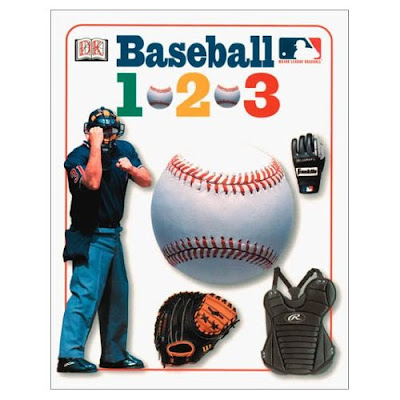 Yes, okay, so these books are intended to appeal to adults on some level (did I not say yumminess?) but for those, parent and child alike, who might not be as familiar with these artists or their works, what a delightful little introduction. I noticed that there's no modern art master alphabet book from Chronicle but I hope they're considering it. In fact, I think this sort of art history could make for a very good series of board books.
Yes, okay, so these books are intended to appeal to adults on some level (did I not say yumminess?) but for those, parent and child alike, who might not be as familiar with these artists or their works, what a delightful little introduction. I noticed that there's no modern art master alphabet book from Chronicle but I hope they're considering it. In fact, I think this sort of art history could make for a very good series of board books.
After all, if Major League Baseball can produce board books (building that brand/team loyalty in the cradle again) then why not do more of the same for the arts and sciences? Just a thought.

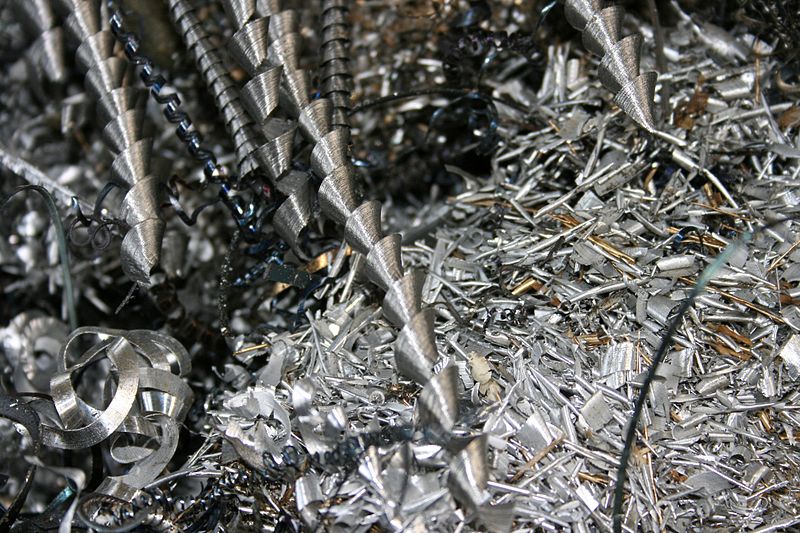
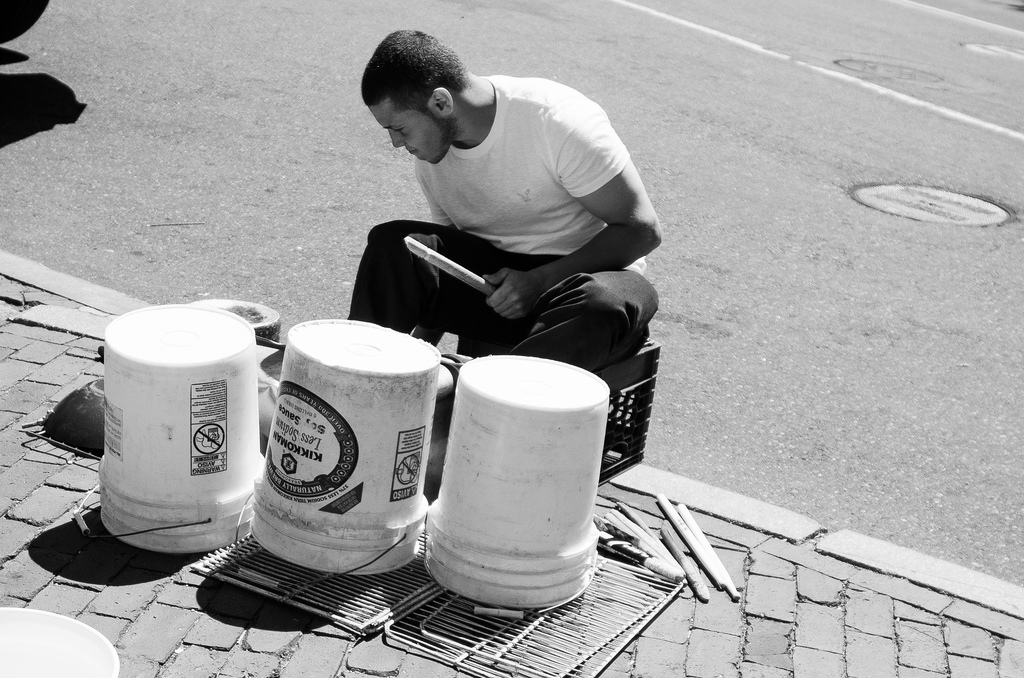










As a writer and lover of picture books and as mother of a daughter who loves to dance, I LOVE the concept of working collaboratively with a dance teacher to find books that encourage creative movement. STOMP, DINOSAUR, STOMP! fits the bill perfectly. Thanks so much for sharing.
Hi, Laura. Thanks for stopping by! My collaboration with Maria is one of my favorite things about blogging. It's so fun picking out books that I think would work well in creative movement classes, and then it is even more fun seeing how Maria actually uses the books. She always surprises me! I'm so glad to hear you appreciate out collaboration, too :)